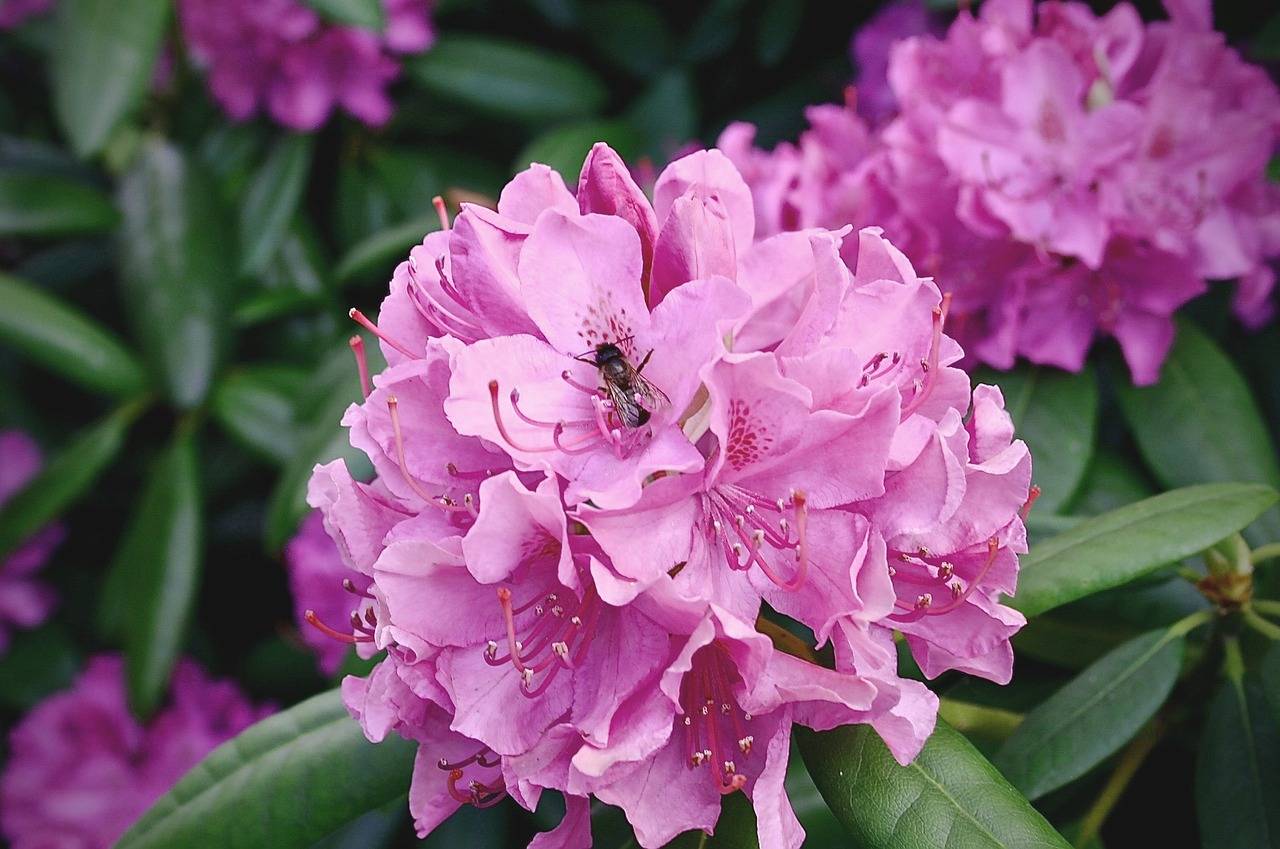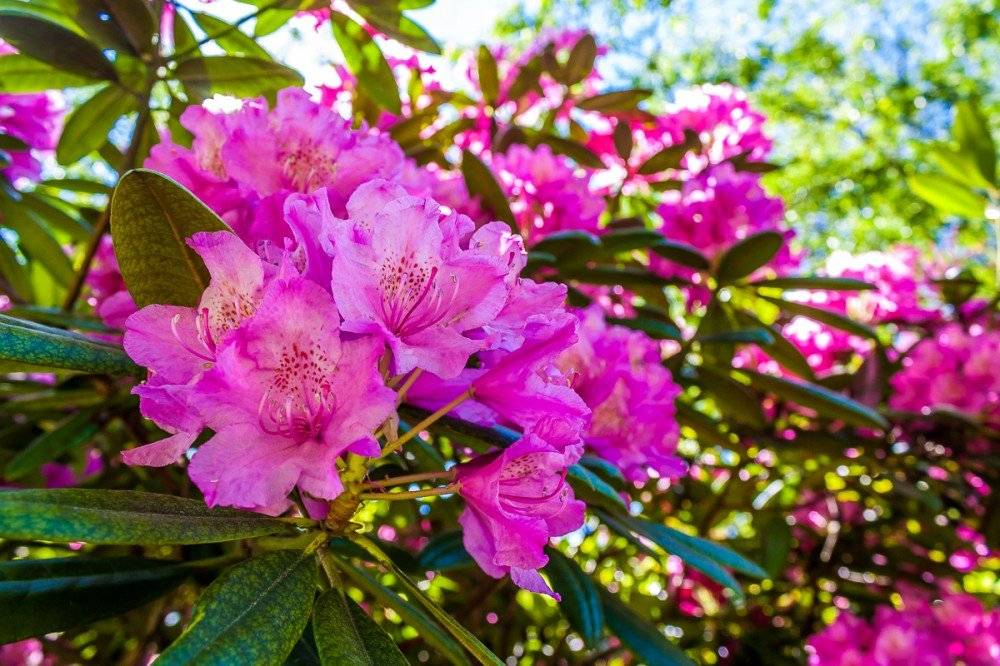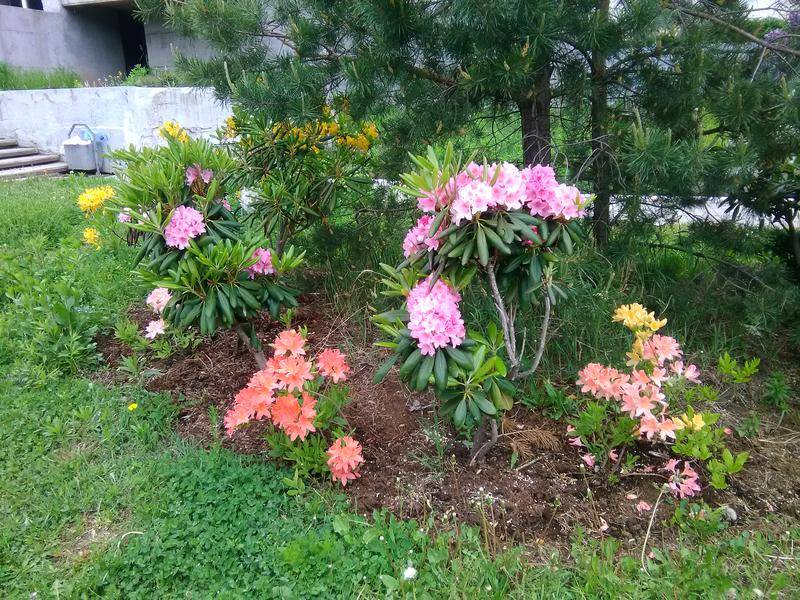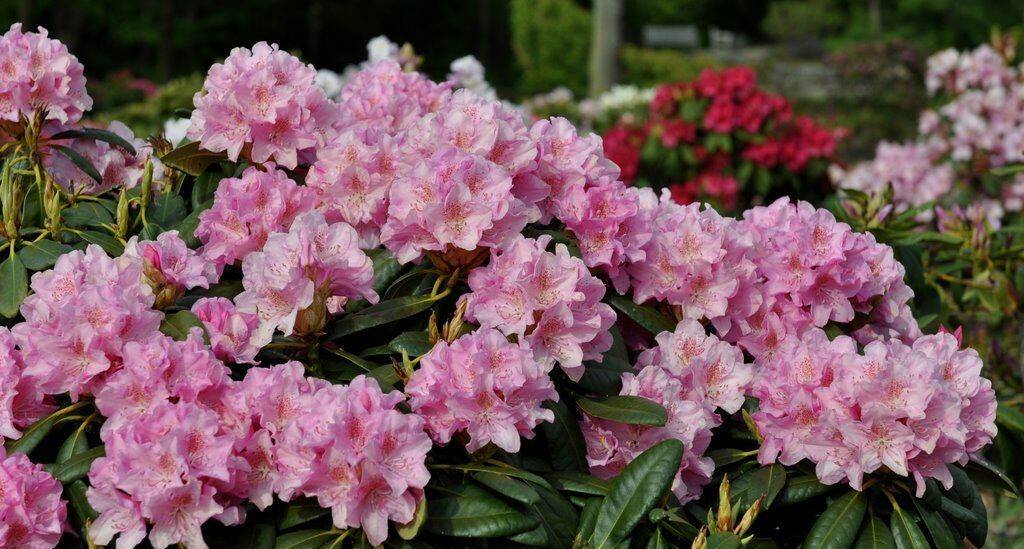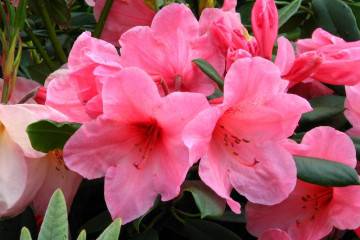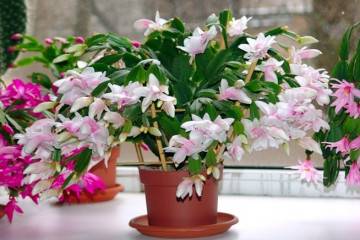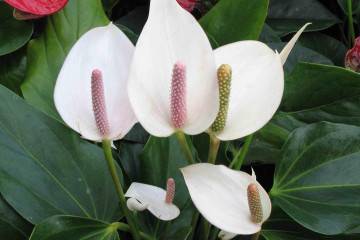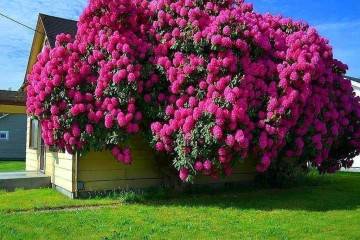Why rhododendron does not bloom outdoors in the garden: what to do
Content:
Any garden should be decorated with flowers. And the brighter and more magnificent they are, the better. Most often, roses, peonies and other popular flowers are used to decorate a summer cottage or home. Rhododendron is a rather unpopular plant among gardeners. The main reasons that he is not very popular are his capriciousness in growing and thermophilicity, which is why he needs a lot of attention. In the absence of proper care for the flowering rhododendron, you can not wait for it. But, if you show patience and diligence, then growing such a flower can be an exciting experience.
Description of culture
Rhododendron belongs to the Heather family. It can be deciduous, semi-deciduous or evergreen, indoor or outdoor. The name of the plant literally translates as "tree with roses" Some varieties of rhododendron can grow up to a height of 30 cm. At the moment, about 3000 species of this flower are known in the world.
How many rhododendron blooms in time
Depending on the type of plant, the timing of its flowering may also differ. Some species bloom in April, most evergreen varieties begin to bloom in early May. But, in addition to the specific feature, the following factors can also affect the flowering duration:
- the climate in which the flower grows;
- ambient temperature;
- illumination of the planting site;
- quality and nutritional properties of the soil;
- the age of the rhododendron.
Why the rhododendron did not bloom
The main question that arises when growing this plant is why rhododendron does not grow and what to do to make it bloom.
There may be several reasons why rhododendron does not bloom outdoors.
Too alkaline soil
In order for a flower to feel well and grow actively, it must be grown in acidic permeable soils. If the planting site is characterized by a high alkali content, then the bush will feel bad, and you can forget about flowering. The normal pH level is 4.5-5.5. With this indicator, nutrients from the soil are absorbed correctly.
If there is no opportunity to plant a plant in the required soil, then there are several methods to reduce the alkalinity of the soil:
- adding special sour peat;
- preparation and placement of composted pine bark;
- purchase of special solutions to increase the acidity of the soil.
Insufficient lighting
Rhododendron does not tolerate direct sunlight, so it is often planted in the shade. This is also a mistake as the plant likes a semi-shaded arrangement. Therefore, if it does not have flowering, then you should check the correctness of its location. The best option would be to plant it in the shade of tall trees.Pine or fir will create favorable conditions with their crowns, and their root system will not prevent the roots of the flower from developing correctly.
Unsuitable fertilizer
You need to feed the flower in moderation. If you do this too often, then flowering may be absent. Excessive fertilization with nitrogen-containing substances promotes active growth of leaves, but negatively affects the ability to bloom. To stimulate the appearance of inflorescences, you can fertilize the plant with superphosphate.
At the same time, the lack of nutrients will also affect the development of the plant. Therefore, it is better to know in advance the signs that the plant lacks some elements:
- a sign of potassium deficiency is the appearance of yellow spots on the leaves;
- brown-red spots on the edges of the leaves indicate a lack of boron;
- if the surface of the leaf has acquired a brown color, it means that the plant does not have enough phosphorus;
- when the veins stand out too much against the background of the leaf surface, this indicates a lack of iron.
The presence of old inflorescences
Faded inflorescences prevent the appearance of new ones. Therefore, they should be removed so that the bush can bloom again.
Fungal diseases
The reason why rhododendron does not bloom can often be the presence of any diseases. If brown spots appear on the surface of the flower, which then dry out and leave a dusty coating, then the plant is affected by gray mold. The reasons for its appearance can be high humidity and ambient temperature above 15 ºС. To combat this infection, you need to plant the bushes not too tightly to each other and immediately remove them when affected shoots appear.
Another fungal disease that can affect flowering is kidney death. In this case, the buds dry up, the leaves darken, and flowering does not begin. The affected kidneys must be removed.
Aphid
Aphids can appear on the leaves and shoots of the plant in early spring. As a result of the invasion of insects, the plant weakens and does not bloom. Severely infested flowers may die as a result. You need to fight aphids by spraying the rhododendron with insecticides.
The bush is planted in the wrong soil
Rhododendron grows poorly and blooms if it is planted in the wrong soil. The following types of soils are not recommended for the plant:
- lime;
- dry;
- too wet;
- too heavy;
- air and moisture resistant.
To create favorable conditions for the growth of the plant, sour peat is added to the hole when it is planted. In the absence of the required level of acidity in the plant, leaves may turn yellow and fall off.
For the correct and active growth of rhododendron, mulching is recommended, due to which a number of advantages are provided:
- the substrate is kept moist for a long time;
- the required pH level is maintained;
- the root system is protected from frost or drought;
- the plant is protected from weeds.
Soil quality has a great impact on the life of the plant. Failure to comply with the necessary conditions can be the main reason why the rhododendron changed color or stopped blooming altogether.
What to do if rhododendron does not bloom
When a planted plant does not bloom, the first step is to identify the reason for this. First you need to check the acidity of the soil in which the plant is planted. It is likely that in the first years of growth, sour peat poured into the hole was enough for him. When the root system has grown, it is likely that it began to lack the necessary substances for flowering and growth.
If the soil has the required acidity, but the plant still does not bloom, then it is likely that it was planted in the wrong place. Ensure there is adequate shade and wind protection.
Also, improper feeding in the past year can affect flowering. If fertilizer was not applied to strengthen the buds, then flowering may be absent.
And one more of the main reasons for the lack of flowering is insufficient watering. In order for the root system to receive sufficient nutrients from the soil, the plant must be watered regularly and abundantly both during the growth period and during the budding period.
Regular feeding of rhododendrons
In order for the plant to develop actively, it must be fertilized regularly. This is done 3-4 times per season using organic and mineral complexes.
The first feeding is carried out in the spring with nitrogen-containing or mineral fertilizers. You can also use mullein solution.
The second fertilization is done after flowering. It is performed to strengthen the kidneys for the next year. Nitrogen-containing compositions or high-moor peat are used.
The third feeding is performed with formulations containing phosphorus and potassium in mid-July.
The last fertilization prepares the plant for wintering and is performed in the fall. The bush is treated with a solution of potassium sulfate to limit the growth of shoots. At the end of autumn, the plant is fed with phosphorus-potassium compounds.
Taking into account all possible mistakes when growing a rhododendron and providing it with proper care, you can achieve a lush and bright flowering, which will undoubtedly be able to decorate a summer cottage.
